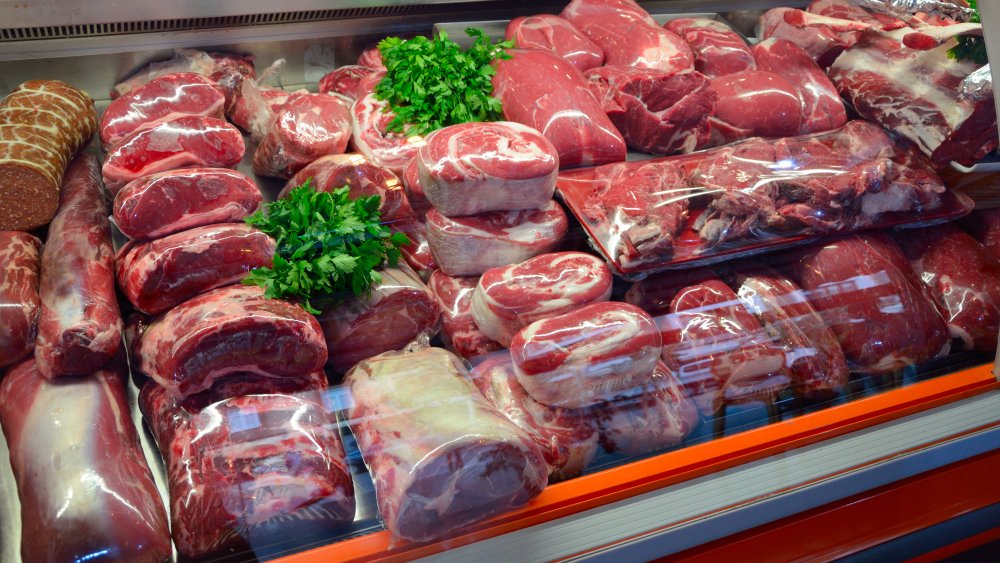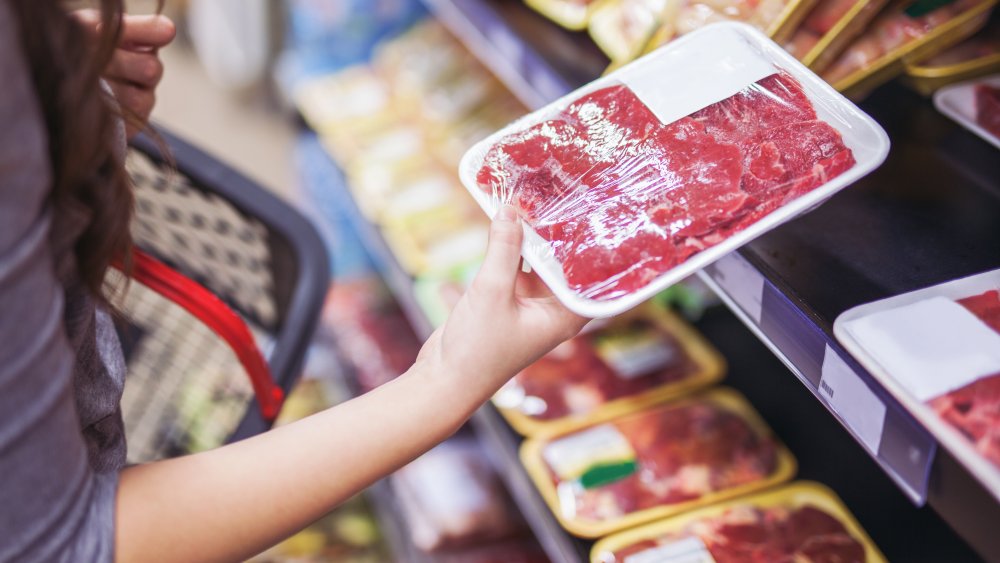How Some Grocery Store Butchers Are Scamming You
If you think picking the right types and cuts of meat can be an intimidating process, you're not alone. A visit to a butcher's shop or the meat section of a supermarket can have a large variety of meats taken from different types of livestock, depending on where you are. While Kari Underly, author of The Art of Beef Cutting says you should be looking to a butcher as a "meat concierge" (via The Street), there are a few things butchers may not reveal unless you're buddies.
Before you even get to see the display case, know that the meat that you see in front of you, could have actually traveled a great distance before it is sold in your local supermarket (via Reader's Digest). In order to keep the meat looking fresh, butchers are likely to remove bits of fat and brown meat from cuts they are about to sell; and to keep those cuts of meat from turning brown, companies have actually been known to pump carbon monoxide into meat packages. For this reason, it's best to check the packaging date to make sure the meat is as fresh as you think it is (via Cheat Sheet). But even then, checking production dates is no insurance, because stores have been known to stretch its best by date, sometimes by as much as three days (via CBC).
The labels on meat packages may reveal more than you think
Aside from looking at packaging dates, buyers are advised to ignore the marketing hype generated by branded meats. Bypass packets marked "certified Angus beef" and instead look for "USDA quality grade" — cuts marked "prime" represent the best and most expensive cuts, followed by "choice," "select," and then "standard."
The other thing you need to check is the ingredient list on the meat product you're looking to buy. Manufacturers today may still inject chicken breasts with broth, salt water, or a seaweed extract in order to make them look more plump. And if you haven't heard of transglutaminase, it may be a good time to find out what it is. Also known as meat glue, transglutaminase is a naturally-occurring enzyme that can be — and is — used by meat producers to create uniformly shaped and sized meat from smaller or irregularly shaped slices. Meat producers are known use transglutaminase to make pork tenderloin, which would otherwise be a cone shape that starts thick at one end, and ends tapered at the other (via Reader's Digest).
You also want to avoid pre-cut meats because buying whole pieces and then having them cut can be cheaper, and if you want to buy the freshest cuts of meat in your supermarket, dig right into the back where the refrigerator case is at its coldest.

